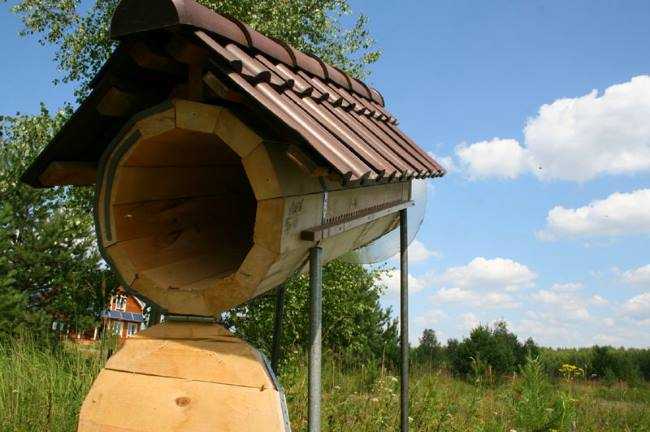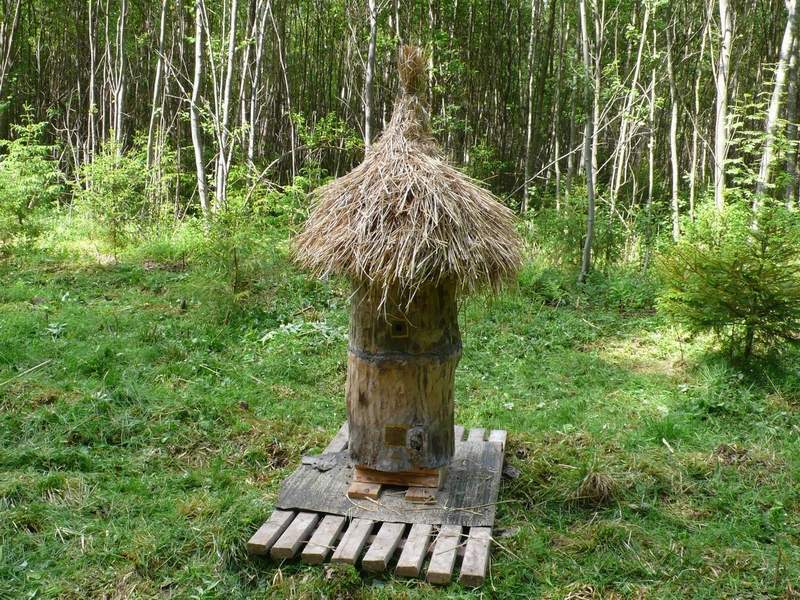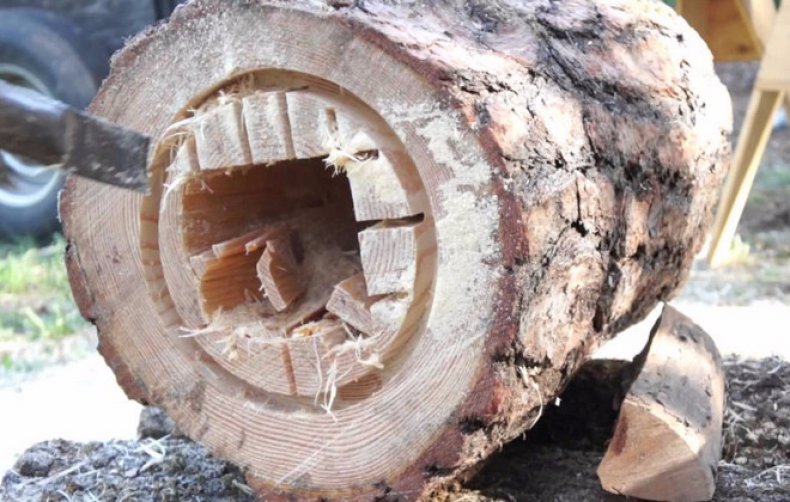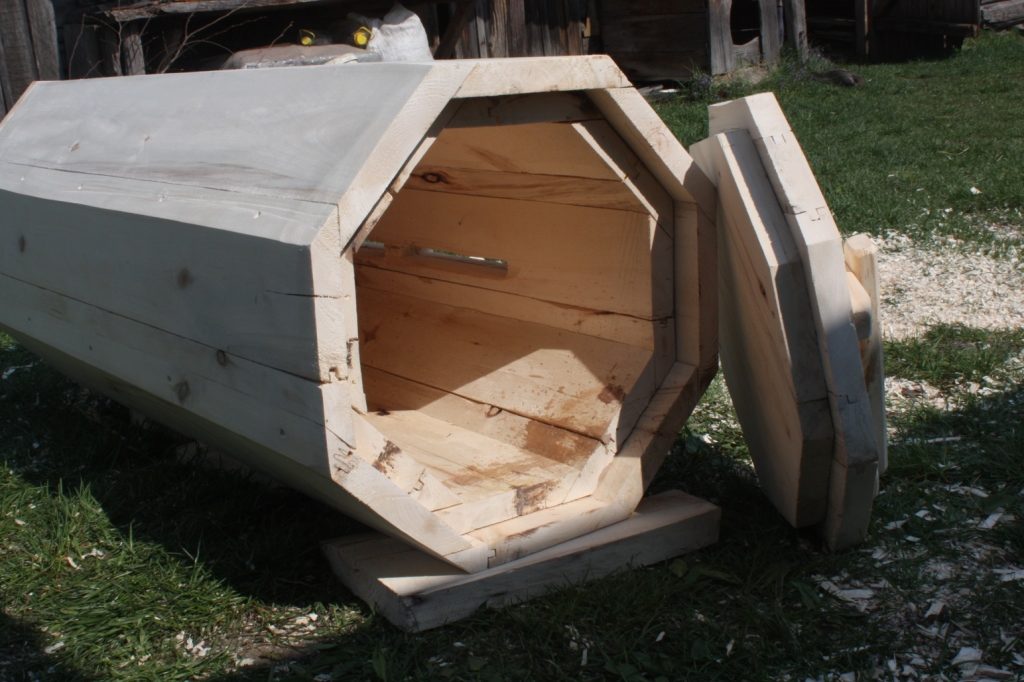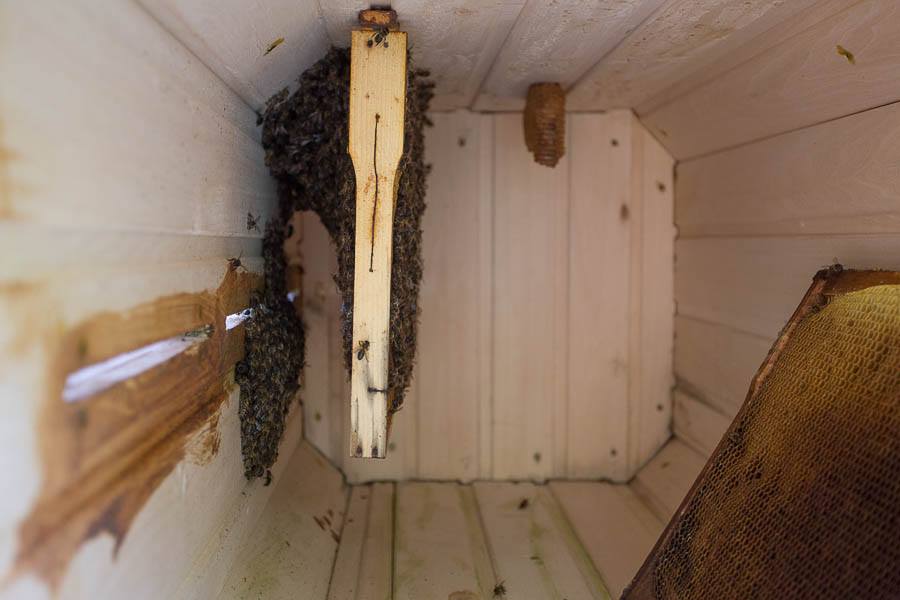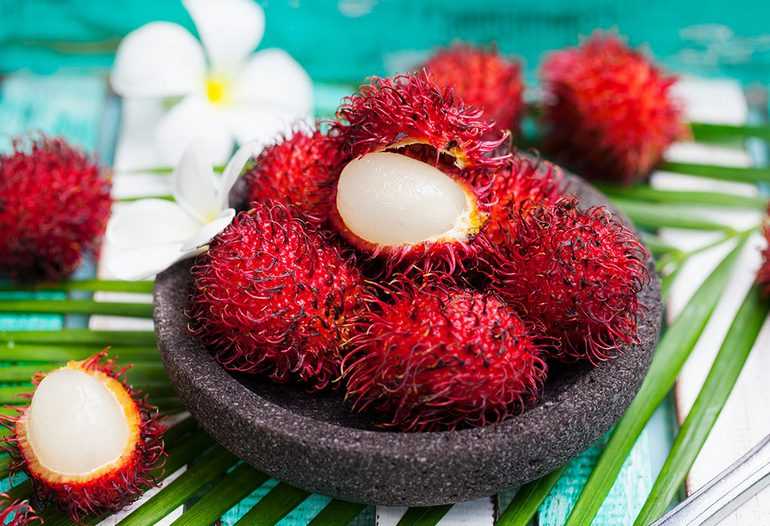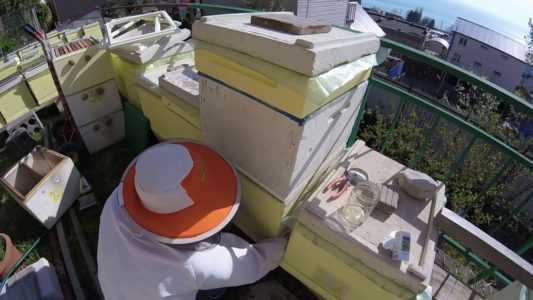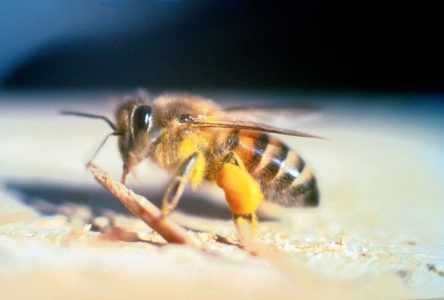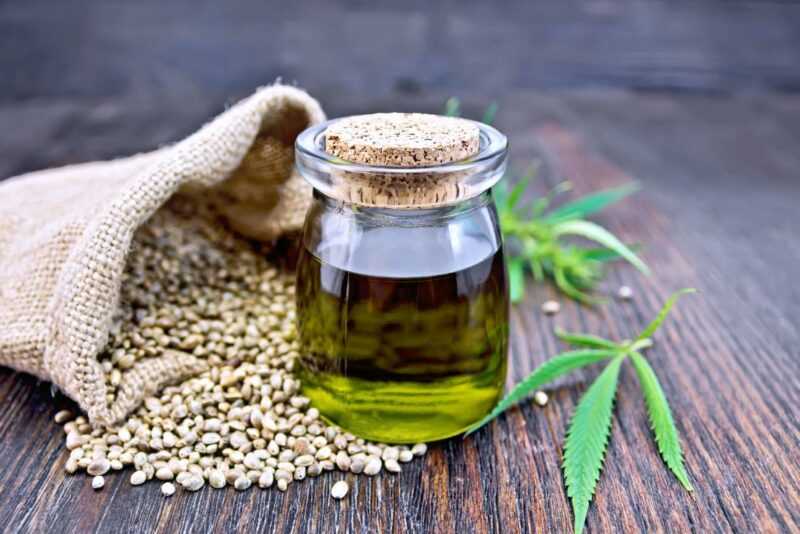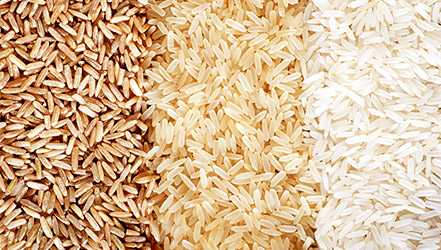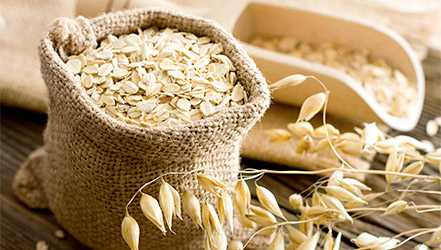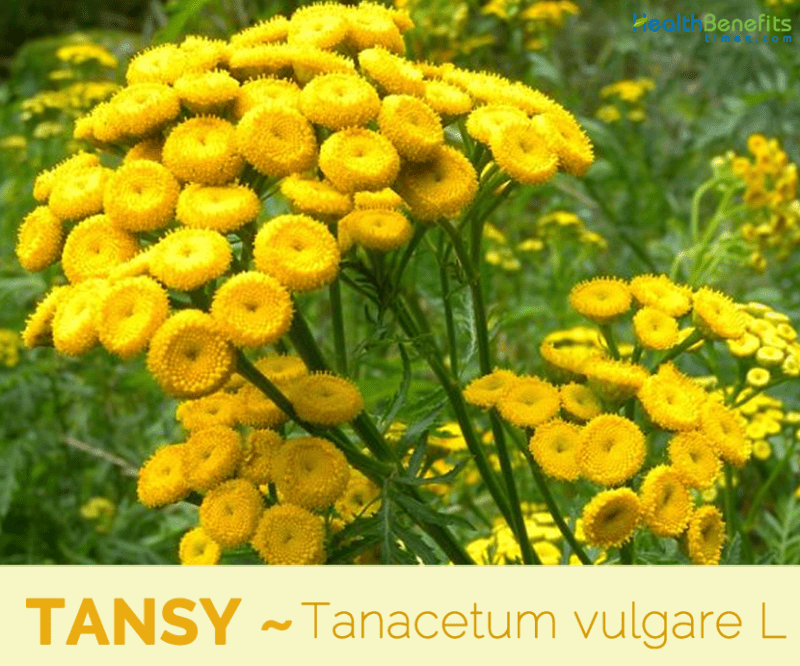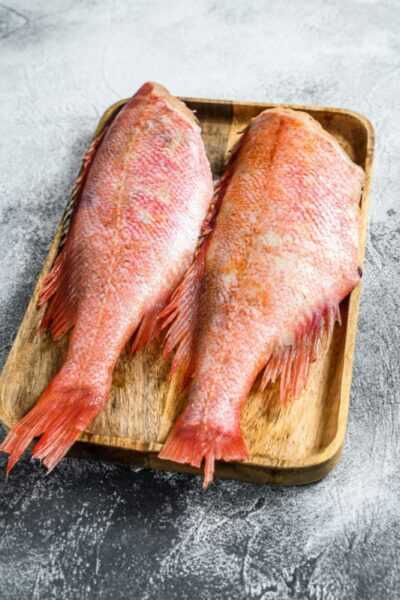From the history of medieval Russia came the concept of beekeeping – collecting honey from wild forest bees living in the hollows of trees. This branch of the economy gradually led to beekeeping: making hives from hollowed-out logs, placing them on the ground and domesticating honey insects. Since then, the dwellings for bees have changed, becoming like boxes, but bee hives, called decks, have not been forgotten to this day.
Modern decks are more complex than their predecessors, but have retained many of their design features. They are not very common, in most farms only rectangular hives are installed.
The bee deck is very reminiscent of their natural home. Roy has the ability to arrange it at will, with the convenience of himself, and not the beekeeper.
Deck and modern beekeeping
It is unlikely to meet bee decks in a large apiary, where honey is extracted in industrial quantities. Hives of this type are chosen by beekeepers who take the first steps in beekeeping, advocate as close as possible to the natural conditions of keeping bees in hives, want to experiment, and cannot devote much time to caring for the apiary and honey collection.
For reference!
The honey harvested by the bees in the log is very tasty, aromatic and matured. But during the season, the volume of its production is 3-5 times less than from a rectangular hive. Therefore, log beekeeping is more suitable for amateur beekeepers who plan to sell only surplus honey.
The boards are placed with the entrance to the south, on stands. They can be located both on the ground and on trees, roofs of buildings: a small height is more usual for insects. The main thing is to choose a place: it should be dry, shaded during the day (from the heat, some of the honeycombs can melt and fall off), without strong winds or foreign odors.
Comparison of decks with modern hives
In addition to the small volume and excellent quality of the honey produced, the bees have several important differences from rectangular bee dwellings:
- Increased structural strength.
- The size of the deck is large enough, it is enough for a large bee family for a long time to live and reproduce.
- Comfort for bees use. It is quite inconvenient for the beekeeper to take out the honeycomb, to ensure cleanliness inside the log.
- Human participation in the life of insects is reduced to spring harvesting and the removal of a part of the harvested honey in the fall (some take its remnants in the spring).
- When building wax honeycombs, filling up unnecessary holes, treating diseases, the bees in the deck are given independence. Insects place the honeycomb as it is convenient for them, gradually filling the inner area of the board.
- No need for regular monitoring, preventive treatment, and maintenance of the bees’ dwellings.
Log beekeeping and its principles
The use of beehives presupposes rare human contact with honey insects, almost complete absence of interference with the processes taking place inside the bee house. There are positive and negative aspects to this.
On the one hand, decks are easy to maintain and inexpensive to maintain. On the other hand, the beekeeper does not have the ability to significantly influence the increase in honey production. It can only free a part of the inner space of the bead from honeycombs, prompting the bees to re-fill it.
Pros
Well beekeeping has several advantages:
- it is more environmentally friendly – artificial materials are not used for the device of honeycombs, there is no treatment with drugs for diseases, pests;
- bees, which are rarely disturbed and fumigated, are less likely to attack humans. Decks can be installed in a suburban area adjacent to neighboring ones;
- insects make the dwelling as suitable for living as possible, create many honeycombs of a convenient size, fill in the extra gaps in the deck body. These factors reduce the number of diseases, prolong the life of bees, increase their resistance to external conditions, improve the quality of their products;
- maintenance of the log does not require large costs: you do not need to constantly monitor the health of the bee swarm, feed it, make frames. You can save on buying many beekeeper tools;
- there is no need to allocate a room for wintering, to prepare for it: in the cold season, the wrestler remains on the street. Suitable conditions are formed inside it, without significant temperature drops;
- collecting honey is less traumatic for bees, only part of the honeycomb is taken from them, without touching the nest, leaving a supply of honey for food in winter.
Cons
A small amount of honey is created in the decks. They are more adapted for the convenience of bees, so they leave part of the supplies. In the year when the insects have settled, it is recommended not to open the deck – everything harvested is needed for the first wintering.
In the conditions of the log, there is a narrow free space for honey collection, in which it is difficult to cut off the honeycomb. The formation and filling of new honeycombs is a slow process, its speed depends only on the insects.
On the sides of the bee, the bees create many closely spaced combs, occupying most of the height of each body. Old wax structures are gradually becoming clogged. It is difficult for a beekeeper to remove unsuitable dark combs, but without major cleaning, about once every 1 years, insects will leave the clogged home.
Many are confused by the impossibility of selective breeding of bees in logs. Usually, a prefabricated bee colony lives in such conditions.
The boards cannot be moved, they are bulky and not adapted to this (the honeycomb may break inside).
Structural varieties
Currently, you can find 3 types of decks:
- vertical
- inclined lounger;
- collapsible multi-storey.
For reference!
The vertical cylindrical design is most similar to the ancient board. This is a segment of a large log 1,5-2 m high, with a diameter of at least 50 cm, the middle of which has been cleaned out, walls 5 cm thick are left. Both ends are covered with wooden covers.
Sun loungers can also be made from a large piece of hardwood. The trunk should be thick enough to comfortably accommodate insects. If this is not found, the hive is hammered out of thick boards in the form of a rectangular parallelepiped. The lounger is placed on a stand at an angle of 20-30 °.
Several sections, hollow from the inside, are stacked one on top of the other to increase honey production. The upper tiers are removed after filling with honey, replacing them with empty ones, the lower body remains intact.
Frames in the deck
Initially, the boards did not involve the installation of internal waxed frames. Modern beekeepers who want to get more honey can add frames to any design of a hive-deck. If it is made of a log, opening doors are made on its back wall: for examining the nest, collecting honeycombs.
The frames are usually placed on the upper tier, under the ceiling (with an insulated cover), where the bees arrange a nest and harvest honey for the winter.
Manufacture by own hands
There are several known ways to make a bee deck. First, you need to prepare the necessary materials and tools, make drawings with calculations.
For the body, a single piece of the trunk or thick boards are selected. The height of the board should be at least 120 cm, the inner diameter – over 40 cm (slats are attached to the deck from the boards from the inside to get a round cross-section, or it is all made like a barrel).
For reference!
It is possible to make a dwelling for insects only from dried hardwood: birch, oak, linden, ash, poplar, aspen.
To make a simple log for bees with your own hands, first separate 2 circles with a thickness of 5 cm from a piece of the trunk.Then, the remaining part (usually sawn in half lengthwise for convenience) is hollowed out, the core is cut out. The inner surface is treated. All parts are dried.
Both halves of the empty cylinder are held together. On one side, at the junction, a gap is cut out about 1 cm wide for the taphole – it starts from the ceiling, occupying 75% of the log height. Several holes with a diameter of 2-3 cm can be drilled, one above the other. The rest of the external gaps are closed.
The bottom cover folds back, it has hinges and a latch. The top is nailed. Inside, 2 crosses are installed for future honeycombs: in the middle and at the ceiling.
For collecting honey, beeswax, a collapsible design is more convenient than a solid one. It consists of several hollow cylinders 30 cm high, the top one is closed with a lid.
Preparing and settling bees
The production of the hive deck is completed by air drying for several weeks. Only after this does the settlement of honey insects begin.
If an apiary is located nearby, a free swarm with a queen can fly out of the hive. It is collected in a swarm box for transplanting into a board.
For reference!
Bees often settle in a free deck themselves, you just need to create suitable conditions, lure with the scent of propolis. In the absence of such an opportunity, a bee colony is bought. You need to choose a young uterus, ideally no older than 3 years.
In front of the entrance, a wide board is laid, a sheet of plywood, where the contents of the swarm are carefully shaken out. They themselves will gradually crawl into the deck through the inlet.
Whether the insects liked the dwelling will become clear within a few days. If the bees began to fly away in search of a good bribe (prey), it means that they are equipping the deck for living. Aimless whirling suggests that the swarm can fly away, considering the conditions of settlement unfavorable.
Log beekeeping is an interesting direction that deserves attention. It is suitable for novice beekeepers. You can make a wrestle without skills, and you do not need labor-intensive care for it. The obtained honey of excellent quality is enough for treating relatives and friends.
